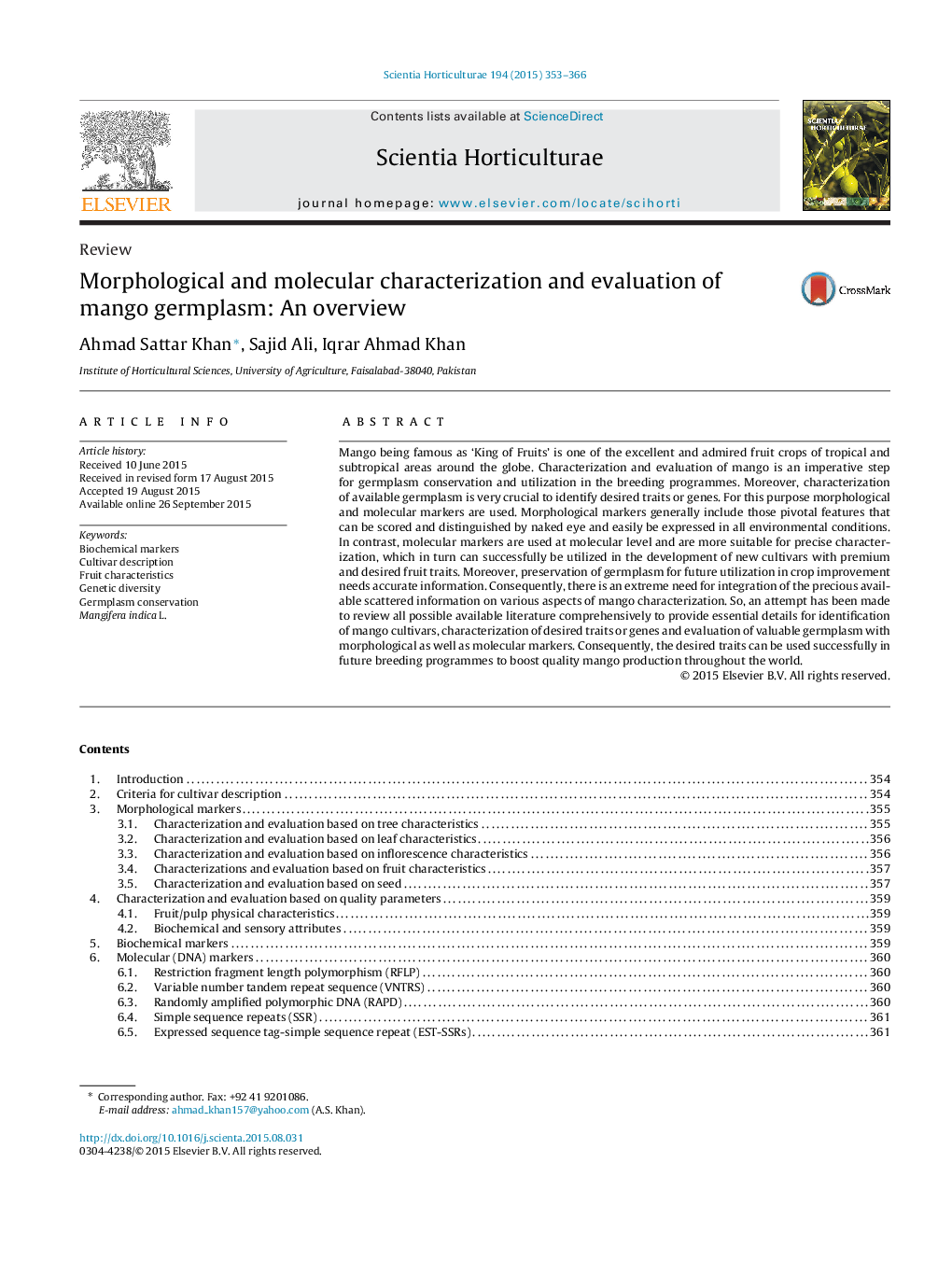| Article ID | Journal | Published Year | Pages | File Type |
|---|---|---|---|---|
| 4566352 | Scientia Horticulturae | 2015 | 14 Pages |
•Characterization is prerequisite for evaluation and conservation of available germplasm.•Characterization can be done initially at morphological and finally at molecular level.•Morphological markers are those characteristics that can be distinguished by naked eye.•Molecular markers are suitable for precise characterization of desired traits.•After characterization germplasm can be conserved for future breeding programmes.
Mango being famous as ‘King of Fruits’ is one of the excellent and admired fruit crops of tropical and subtropical areas around the globe. Characterization and evaluation of mango is an imperative step for germplasm conservation and utilization in the breeding programmes. Moreover, characterization of available germplasm is very crucial to identify desired traits or genes. For this purpose morphological and molecular markers are used. Morphological markers generally include those pivotal features that can be scored and distinguished by naked eye and easily be expressed in all environmental conditions. In contrast, molecular markers are used at molecular level and are more suitable for precise characterization, which in turn can successfully be utilized in the development of new cultivars with premium and desired fruit traits. Moreover, preservation of germplasm for future utilization in crop improvement needs accurate information. Consequently, there is an extreme need for integration of the precious available scattered information on various aspects of mango characterization. So, an attempt has been made to review all possible available literature comprehensively to provide essential details for identification of mango cultivars, characterization of desired traits or genes and evaluation of valuable germplasm with morphological as well as molecular markers. Consequently, the desired traits can be used successfully in future breeding programmes to boost quality mango production throughout the world.
